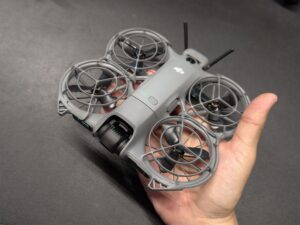
With a launch hosted by comedian Jimmy Fallon yesterday, Google unveiled its latest Google Pixel 10 phones that bank hard on AI to make an impression on users already spoilt for choice for both regular and foldable phones.
The lineup includes regular candybar models – the Pixel 10 Pro XL flagship and smaller Pixel 10 and Pixel 10 Pro – and the foldable Pixel 10 Pro Fold. They mark the 10th year Google has been selling the Pixel brand of mobile devices.
Earlier, it had worked with Android phone makers such as HTC, Samsung and LG to make its Nexus series of “Google phones”. In 2016, it launched its own Made by Google models called Pixel that directly competed with its Android partners.
As before, you won’t expect the latest Google Pixel 10 phones to outsell the most popular Android models but they do offer a peek at how Google sees the Android ecosystem going forward. Unsurprisingly, the cloud giant has doubled down on AI this year.
In contrast, the Pixel 10 design has been kept similar to last year’s Pixel 9, which was at the time a timely shift in the Google phones’ look and feel. This year, Google seems happy to keep the “sharp” edges and satin finish at the back, along with an elongated camera bump.
What’s under the hood in all the Pixel 10 phones is the latest Tensor G5 chip, which Google promises will help make its AI – this time, Gemini Nano – run better to help users with everyday tasks.

What are some of the cooler AI tricks this time? Perhaps the one that is most tightly integrated into your interface is Magic Cue. By looking at interactions in the Google Messages and the Phone apps, it promises to proactively find the right information right on… cue.
So, if you’re chatting to friends to say you’re late for a dinner appointment, perhaps the onboard AI running right on your phone can help you get a call in to the restaurant to tell them to move the reservation.
If you’re calling an airline, it looks up your e-mail to show your flight details during the phone call. This way, you don’t have to fumble between looking up your e-mail while keeping the call going.
Another cool trick on the Pixel 10 phones is a camera assistant that helps you better frame a picture to get, say, a better looking post on your Instagram or TikTok.
When you set up for a shot, you can fire up Camera Coach to help you get a better angle, say, by moving your camera or yourself closer to a subject.
During demos at Google’s Singapore office yesterday, this seemed to require a bit of patience and wouldn’t be for shots that capture a fleeting moment. That said, it still seemed impressive how far AI has come to guide even novices to take great shots.
Gemini, of course, is available live for just about anything you want to ask it. Fire up your camera for the AI to “see” your surroundings and you can ask it what’s the best piece of clothing for an evening dinner or how to operate an unfamiliar coffee machine, for example.
For these tasks, you need to get online, which means you require an Internet connection and also have to trust that Google would keep everything you share private.
There are other improvements on existing AI features as well. One that adds a person to a group photo – by merging two separate shots in a similar frame – is better now because the AI can do so without making the person look too tall or short in relation to the others in the photo.
How well these AI features will boost Google Pixel 10 sales is an open question, of course. The phones themselves, at least from first impressions yesterday at a media event, are good looking and competently designed.

Prices, you’d argue, may need to be a bit more competitive. In Singapore, the smallest Pixel 10 with a 6.3-inch screen costs S$1,199 with 12GB memory and a low 128GB storage capacity.
It’s 2025 and the minimum should be 256GB – even budget phones offer that now. On the Pixel 10, you have to pay S$1,339 for it, which is close to what some top-end flagships cost.
For the more spec’d out Pixel 10 Pro with a similar 6.3-inch screen, you get a sharper OLED screen, along with 16GB of memory. Start with the basic 128GB storage and the cost is S$1,459 but bump up the capacity to 1TB and it goes past S$2,000.
The larger Pixel 10 Pro XL is significantly larger with a 6.8-inch OLED screen and it packs in the same 16GB memory. Storage starts from 256GB for S$1,739, going up to 1TB (S$2,239).
What about the Pixel 10 Pro Fold? The inner foldable screen remains at 8 inches, while the external screen has been bumped up a little to 6.4 inches this year. However, the design looks similar to last year.
Though this was pretty slim when the Pixel 9 Pro Fold debuted, the competition has caught up somewhat. Surely Samsung’s Galaxy Z Fold 7 is a bigger competitor this year to the latest Google foldable now.
Note that the Pixel 10 Pro Fold is out later than the other Pixel 10s, which are expected on the shelves next week in Singapore. The foldable will be available instead on October 9 for S$2,399 for the 256GB model. At least, this is cheaper than Samsung’s launch price (S$2,698) for its latest foldable.
We’ll have more hands-on impressions on the new Pixel 10s soon. Keep a lookout on Techgoondu!






